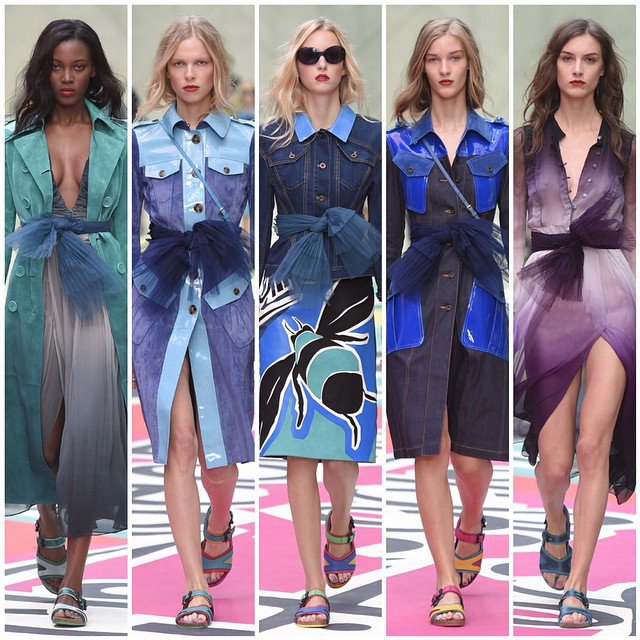Amidst the glamour, excess and fanfare of Fashion Weeks around the world, it’s easy to forget that the fashion industry is all about persuading customers to buy.
Brands are getting creative with new ways to connect with audiences and encourage purchases. New York Fashion Week provided live streaming of runway shows, and Ralph Lauren’s show featured “4D” technology- giving the illusion that the models walked on water in the middle of Central Park.
Designers have hopped on the wearable-wagon too, with Diane von Furstenberg’s collaboration with Google Glass while others like Tory Burch have married technology and jewelry.
Burberry and Topshop have pulled ahead as pioneers of digital innovation in fashion.
Burberry was one of the two brands Twitter partnered with for the Beta launch of its Buy Button. In addition, the brand introduced an online “Runway Made to Order” service, which provided customers the opportunity to buy and personalize Burberry products from the upcoming collection.
Topshop kicked off London Fashion Week by introducing the “Social Catwalk,” a campaign that encouraged customers to get involved by uploading pictures of themselves to Instagram for a chance to see themselves on the runway screen.
In order to see which brand used digital marketing more effectively, we ran a small sample of the data through our platform for a quick analysis.
From Burberry’s demographics, we can see that the brand has a loyal following that is primarily female. Provided Burberry is a strong international brand, there is no surprise in relative demographic diversity.

The majority of Topshop’s audience are millennial females. Interestingly, the second most common demographic within this brand’s audience are Hispanic millennial females, which could be a valuable market segment for Topshop in the future.

But what does the buyer look like?
Nearly 33% of Burberry’s audience fall within the Style Pro persona. This customer could be a fashion industry expert–a model, perhaps–or employed the fashion/retails marketplace. As we can see below, conversations of these people tend to focus on professional and industry-related topics.

Burberry’s top persona likes to stay ahead of trends, designer and events, and positions him or herself as an elite industry expert. Limited edition offerings and access to cutting edge technologies resonate with the goals of Burberry’s primary fan.
The Topshop buyer is a trendsetter. A bit younger than the average Burberry buyer, 42% of Topshop’s audience falls within the Mature Millennial persona. Topshop’s Mature Millennials are trendy, price conscious and engaging with brands through digital and social media.

Topshop’s goal is to entice customers into their store to experience the brand firsthand. “Showrooming” is an important step in the buying process for the Mature Millennial. This customer is hands-on and likes to view, touch and feel the product in-store before searching for it online at the lowest price.
Connecting with the right audience at the right time with the best message is a challenge that all brands face. Using data, brands can cut through the fluff to discover exactly what, how and who to target with timely and relevant messages.
Interested to see how People Pattern audience intelligence can benefit your brand? Request a demo below, and someone from our team will be in touch.



Recent Comments